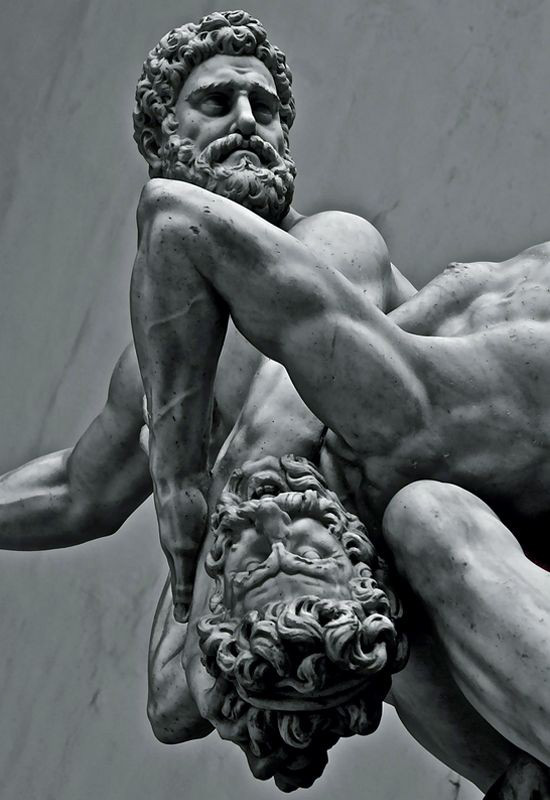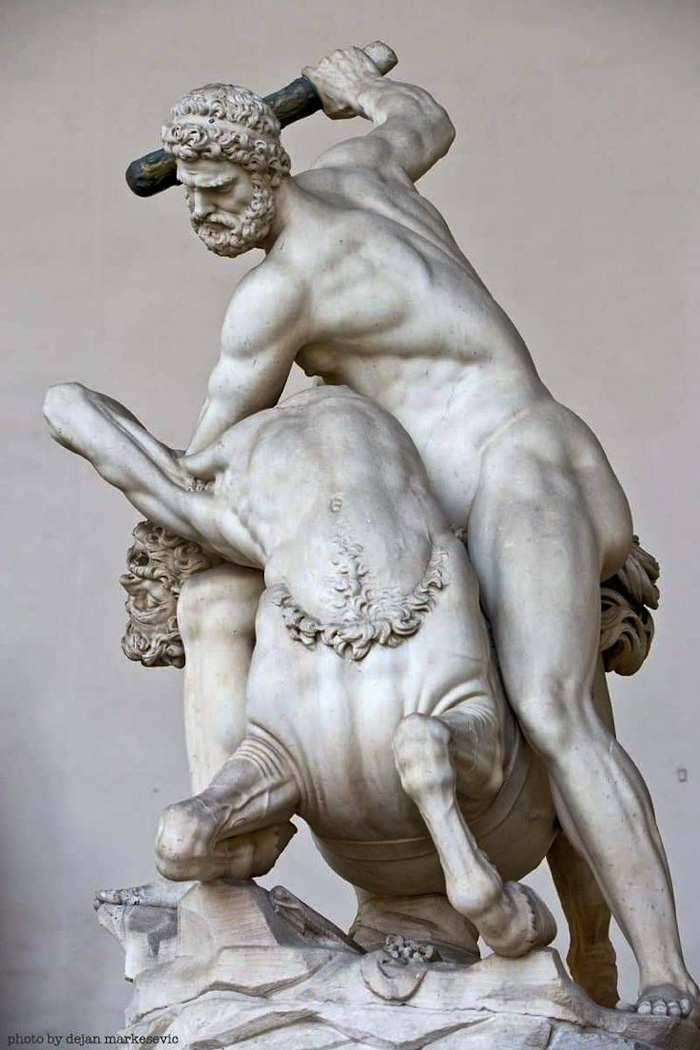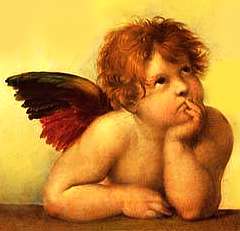Hercules and Deianira undertook the challenge of crossing the Evenus River. However, Nessus, the centaur tasked with guiding them, had dark intentions. In a despicable act, Nessus first crossed with Hercules and his supplies, leaving Deianira alone on the opposite bank. Taking advantage of this opportunity, he attempted to kidnap and violate the defenseless woman.
The Centaur's Deception and the Poisoned Arrow
Hercules’ shrewdness quickly perceived the dangerous situation. Acting swiftly, he took his bow and shot an arrow impregnated with the bile of the Lernaean Hydra toward the malevolent centaur. The Hydra's blood was a highly potent and incurable poison, and Hercules had coated all his arrows with it after completing the second of his twelve labors.
Nessus fell agonizingly at Deianira's feet, but not without first uttering a curse on Hercules in his last moments. The centaur, in an attempt to manipulate the young woman to take posthumous revenge on the hero, revealed a supposed secret: Nessus's blood, mixed with semen spilled during his attempted assault, possessed the power of a love potion, a tool Deianira could use to eternally hold the hero's attention.

The Fatal Love Potion: The Posthumous Revenge
Deianira, naive and believing the words of the dying Nessus, preserved the liquid, which, unknowingly, was not a love potion but a deadly poison amplified by the Hydra's bile. This act of trusting the enemy would be crucial in her tragic fate.
Years later, after an expedition to Oechalia, Deianira discovered that Hercules had taken Iole, the daughter of Eurytus, as a concubine. Consumed by jealousy and the panic of losing her husband, Deianira remembered the centaur's "secret." In a desperate act to reclaim Hercules' exclusive love, she poured the supposed blood of Nessus onto a ceremonial tunic and sent it via his servant Lichas to the demigod, hoping to rekindle his passion.

Hercules' Agony and His Ascent to Olympus
When Hercules put on the impregnated tunic, the heat of his body activated the residual Hydra venom. He experienced unbearable pain, as if his flesh were being consumed by a thousand snakes. The tunic adhered to his skin, and any attempt to remove it tore off pieces of his own flesh. The burns were so intense that Hercules, in his agony and a fit of pain and fury, seized the messenger Lichas and threw him into the Aegean Sea, where he turned into a rock.
In the midst of his suffering, Hercules ordered his retinue to carry him to Mount Oeta. There, to end his torment and restore his honor, he built a funeral pyre. It was his loyal friend Philoctetes who, out of compassion, lit the pyre, marking the tragic earthly end of one of Zeus's most prominent sons.

However, Hercules' story did not end in disgrace. His divine essence, freed from the mortal body, ascended to Olympus. In this divine realm, he reconciled with the goddess Hera, his eternal persecutor. In an unexpected turn, Hera offered him the hand in marriage of her daughter Hebe, the goddess of youth. Thus, Hercules found redemption, immortality, and peace on Olympus, leaving behind the torments of his mortal life and symbolizing the final reward for unparalleled heroism and suffering.
Giambologna's Sculptural Masterpiece
The work "Hercules and the Centaur Nessus" by Jean de Boulogne (Italianized as Giambologna) is a late Renaissance (Mannerist) sculpture that represents the stage of the myth just before the tragedy of the love potion: the moment of Nessus's punishment at the hands of Hercules on the Evenus River.
Executed in marble, the sculpture captures the tension, force, and dynamism of the confrontation. Giambologna, one of the most influential sculptors between Michelangelo and Bernini, uses the Mannerist technique to create a spiral composition, forcing the viewer to walk around the work to appreciate its complexity.
Composition and Dramatic Effect
The sculpture, created in 1599, is characterized by its dramatic and physical tension:
- Hercules (Humanity and Reason): He is depicted with powerful musculature, the embodiment of superhuman strength and will. His pose is dominant, and his face shows resolute firmness, symbolizing divine justice. His nude body is the ideal of classical perfection.
- Nessus (Bestiality and Passion): The centaur is portrayed at the moment of defeat, writhing in pain and supplication. The transition between the human torso and the equine body is brutal. The contrast in textures between Hercules' smooth skin and the rough, hairy surface of the centaur accentuates the duality between the civilized and the savage, good and evil.
- The Spiral Movement (Figura Serpentinata): The work is designed to be viewed in 360 degrees. The limbs of both characters intersect, creating diagonal lines that propel the gaze upward, following the twisting of Nessus's body. This spatial complexity is a key characteristic of Mannerism.
Gian Bologna achieves a unique expressiveness, highlighting anatomical and emotional details. This masterpiece merges mythology and art, exploring themes of duality, conflict, punishment, and redemption. The tension between humanity and bestiality is reflected in every sculpted detail, creating a striking piece that transcends time and continues to captivate admirers of sculptural art.
The work was originally made for Cardinal Ferdinando I de' Medici and was finally located in the Piazza della Signoria, near other monumental sculptures. Although often overlooked when surrounded by giants like the David (replica) and the Fountain of Neptune, "Hercules and the Centaur" is a testament to the technical summit of late Florentine sculptural art.
THE WORK
Name: Hercules and the Centaur Nessus
Sculptor: Jean de Boulogne (Giambologna)
Creation: 1599
Location: Loggia dei Lanzi, Piazza della Signoria, Florence
Material: Marble




